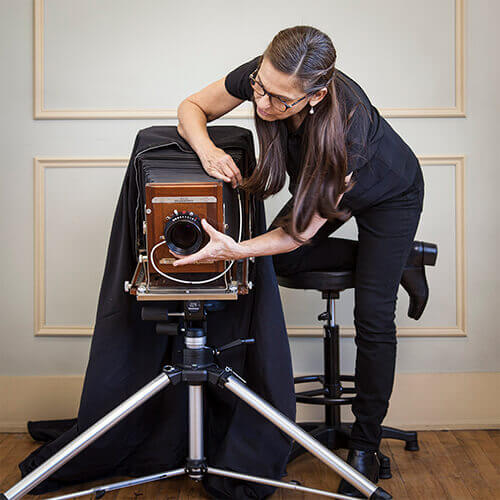Cole is best known for her
underwater photography, but her other studio practice during the cold months in Toronto is an ongoing series of wet collodion photographs. This heavily analog process from the 19th Century is a years-long endeavor of revitalization and experimentation, offering modern day viewers an understanding of what it took to develop photographs in the early days of its invention.
Cole has added her own unique take on the process by adding a layer of color in contrast to the usual sepia tones associated with the genre. The resulting wet plate photographs are tactile and dimensional dances between light and shadow, past and present, depicting women in timeless dreamscapes.
We asked her a few questions about this specific project.
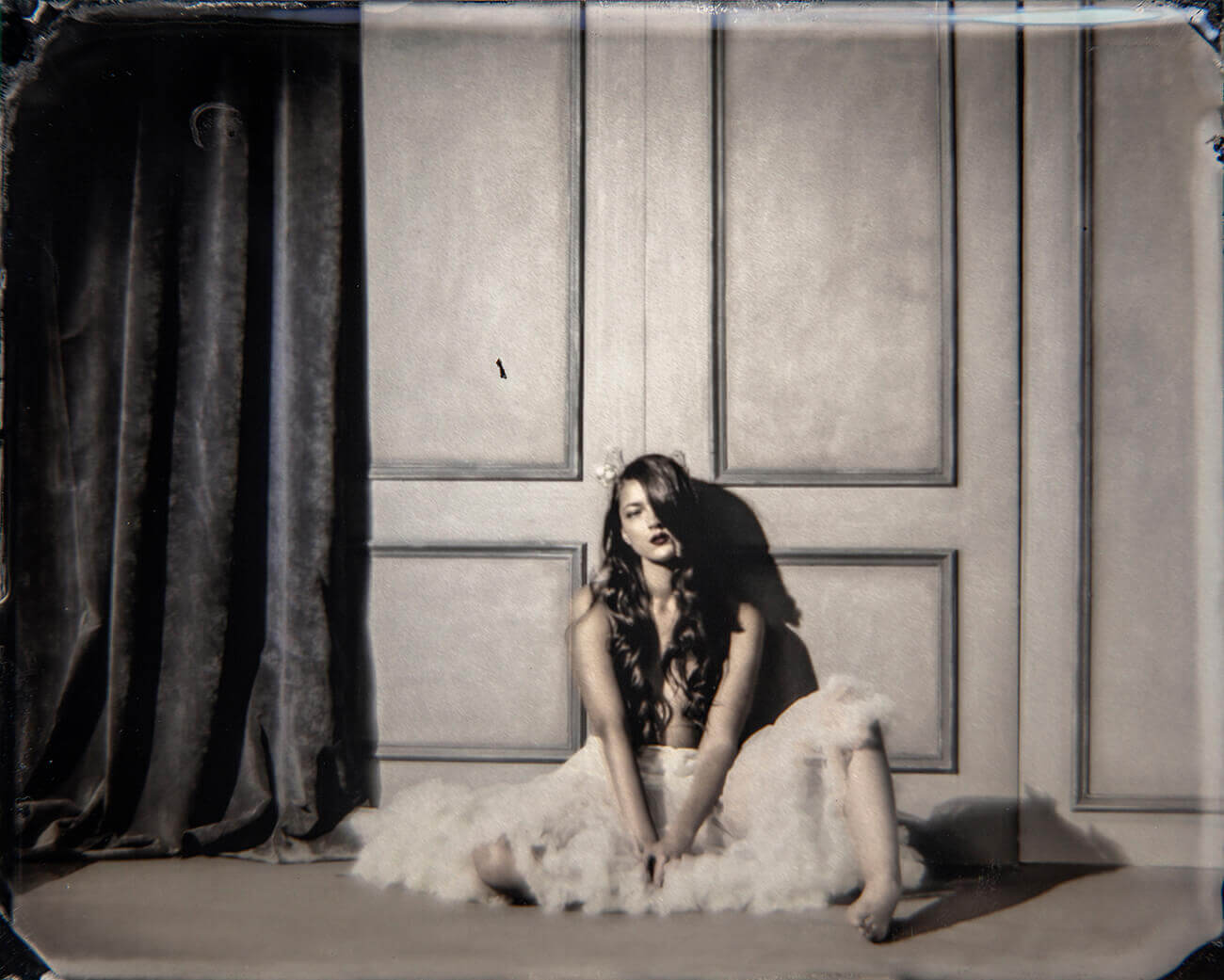
Passing Time from Shadow Dancing, © Barbara Cole
I decided to attend a weekend workshop in Santa Fe, New Mexico, in 2010, led by France Scully Osterman and Jill Enfield, leaders in the wet collodion field.
I live in Toronto, ON, and the weather is such that I can only shoot underwater for 4-5 months. I wanted to find something that could fill in the rest of the year. The idea of this process intrigued me because it was analog, which I had enjoyed immensely in the 70s and 80s. Because you make your own film for this practice, it would not be discontinued like so many films of late.
For those who may not be familiar, can you dive a bit into the process and history of the medium?
Wet collodion is an early photographic technique from the 1850s that involves coating a glass plate with a mixture of collodion and a soluble iodide (film), then immersing this in silver nitrate before taking the photograph. Once the image is taken, the plate is developed in a series of chemical baths before being varnished for preservation. The process requires heavy prep work and each handmade image takes at least half an hour to create from start to finish. It’s not a perfect process and artifacts are left on the plate, such as scratches and bits of dust but that’s why I love it. Photography has become way too polished of late.
Why did you want to work in this process?
It’s very hard to make a print and I love a challenge. I thought it would be simple, sort of like an instant Polaroid, but it’s the hardest photographic process I’ve ever had to learn. Harder than shooting underwater for 24 years!
There are a number of reasons why wet collodion appealed to me. First, I began taking black-and-white pictures when I worked at The Toronto Sun in the 70s, and the magic of the darkroom always attracted me. Watching an image appear out of the ether never gets old. When the newspaper made the switch to colour film, I was devastated. So this process brought me back to a past I had loved. Secondly, I love the non-digital look of these photographs. Collodion allows me to work in that sweet spot between painting and photography. There are turn-of-the-century, one-of-a-kind lenses that give you a unique effect. Using collodion, I am forced to pre-visualize, rather than my digital method of shooting towards the image, since you usually just shoot one or two glass plates. It is a rewarding challenge if you get it right.
Lastly, I love creating a blend of images that flow in and out of time. Collodion physically reminds you of that passage.
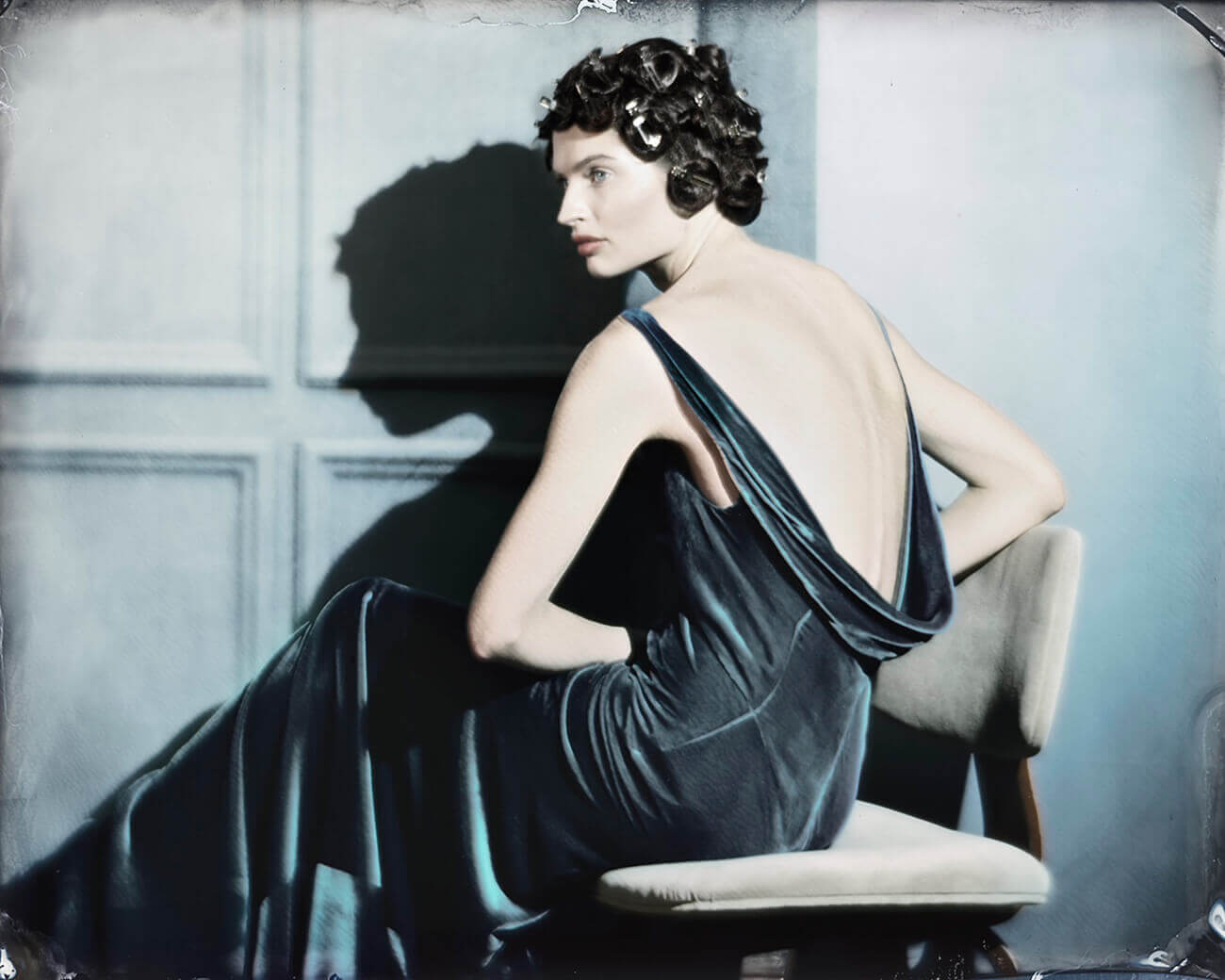
Ivona Blue Velvet Seated, from Shadow Dancing, © Barbara Cole
A master in the field, Mark Osterman, often does workshops on troubleshooting. A couple of months ago while helping me to solve yet another problem, he said, “You are the course.” Apparently, I have made mistakes he’s never heard of. I had a very, very, very long learning curve. The chemistry is challenging and getting the prescribed chemicals is often difficult in Canada, so I substituted in places that mattered. Learning the technique is so tricky. You need to be extremely precise, which is really not my nature at all.
Quinn Jacobson, another master in the field, has a fabulous series of videos that are the best I’ve ever seen. It’s impossible to do this process without some form of mentorship and I’ve been lucky to work (on Zoom, actually) with many of the masters.
Any surprising accidents that led to some interesting ideas?
The thing with this process is that every shoot has surprising accidents and can make you careen off in other directions. My problem in the early days was that I twisted and turned like a leaf in the wind. I found everything fascinating but I’ve learned to stay focused on exploring one idea at a time.
Wet plate collodion photography is often black-and-white or sepia-toned. Why did you decide to modernize it with a layer of color?
I don’t see any point in working in a medium without trying to advance it. I always say to students (who take me aside at exhibitions to ask about equipment, details and things like): whatever you do, make it yours. I began working in photography with black-and-white prints which I hand-coloured. I always seemed to need a touch of colour; it humanized the print for me. Working in collodion, I tried to just stick to the black-and-white plates (I shoot on glass plates called ambrotypes) but it seemed too journalistic. Now I use the digitized collodion print as the base layer and then I space a colour image on top, shot at the same time, back-printed to the plexiglass on top. I love the fact that you can actually look through the image as I do when using the field camera to make these images.
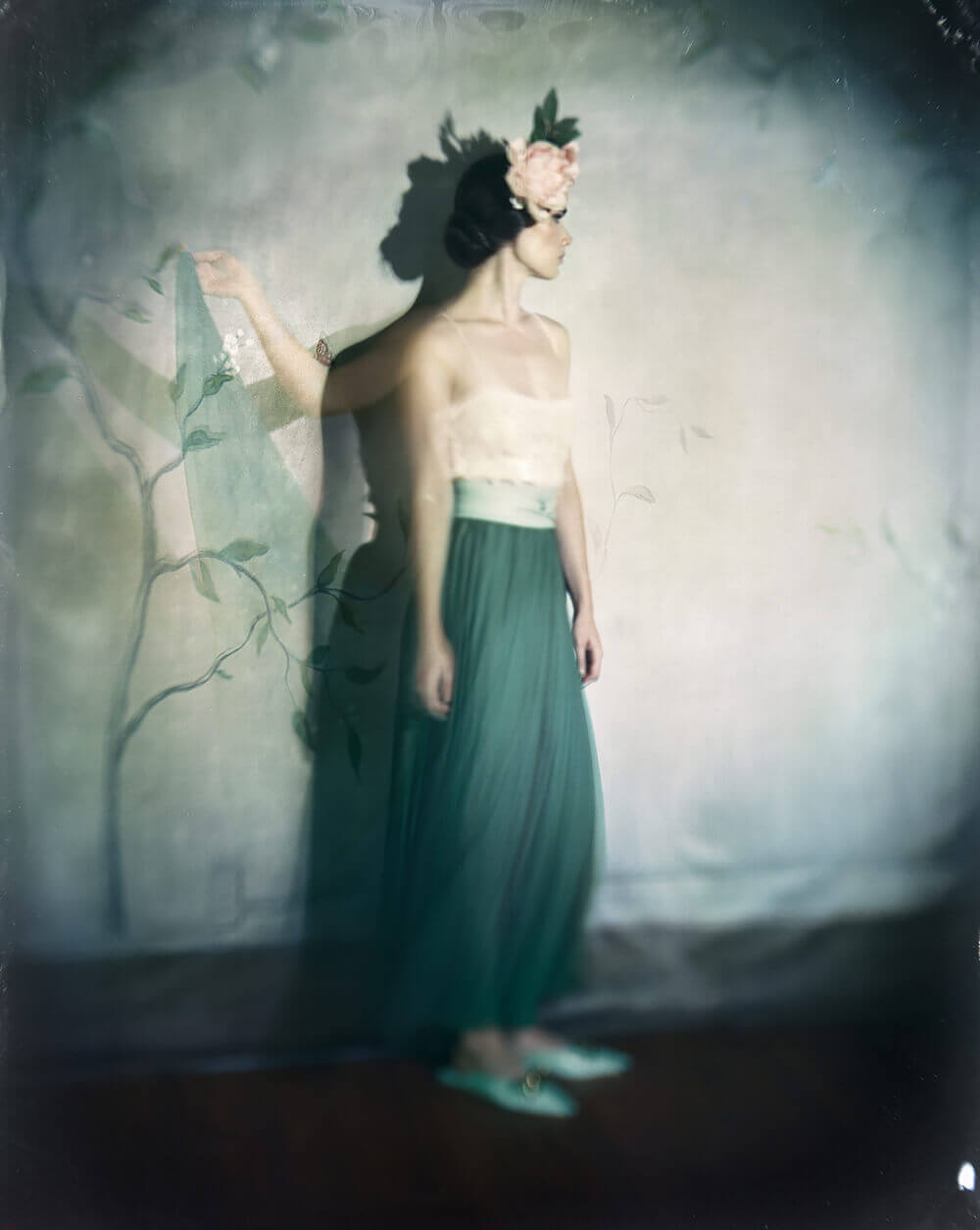
Teddy in Green, from Shadow Dancing, © Barbara Cole
For years, I’ve been fascinated by the mystery and metaphor of shadows. My lifelong journey with depression reminds me that we are always walking with our past. Without light there are no shadows and the prospect of hope is a powerful personal metaphor.
By using wet collodion and my own modernized twist of adding a layer of color, the resulting tintypes offer glimpses into a particularly feminine soul. I believe that Shadow Dancing inhabits a poetic space you have never been to but wish you had.
What do you hope people take away from this series and the medium overall?
This medium reminds us of our own imperfections and the beauty of those less than perfect things that we hide from ourselves and others. It’s a very human space to work in and gives us a sense of humility.
Your overall practice is very much rooted in the camera as a technology that can be manipulated. Is this an attempt to maintain some kind of tactile quality in the work?
Photographs can be like sculpture with subtle layers. In the beginning, as I’ve mentioned, I had coloured my prints and I would glue mixed media on the print to get some texture. When I had the pleasure of shooting with Polaroid SX-70 (time zero film) I would move the emulsion around to give it the feeling of an oil painting. My underwater work is all hand-coloured digitally to enhance textures and now my collodion work uses layers of colour in a dimensional way. The photograph has always been my underpainting.
What’s next for you?
Right now I’m working on a series called Fragments that uses collodion and 4/5 colour film.
They are portrait puzzles made up of small pieces that overlap. I’m creating character studies through makeup and bits of costume and wonderful actors. This has been evolving for a couple of years but the series has finally begun to take shape now.
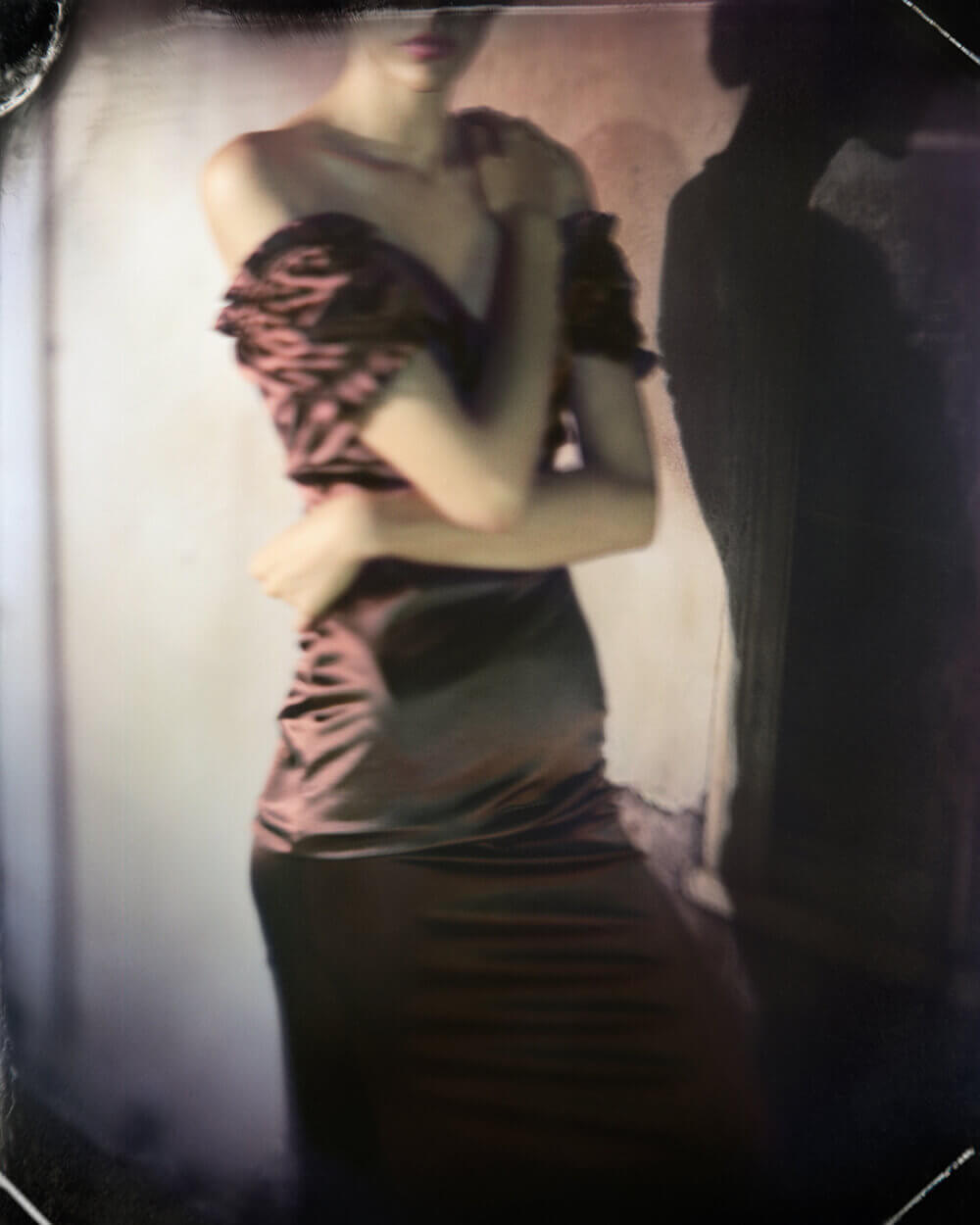
Brown Ruffle, from Shadow Dancing, © Barbara Cole
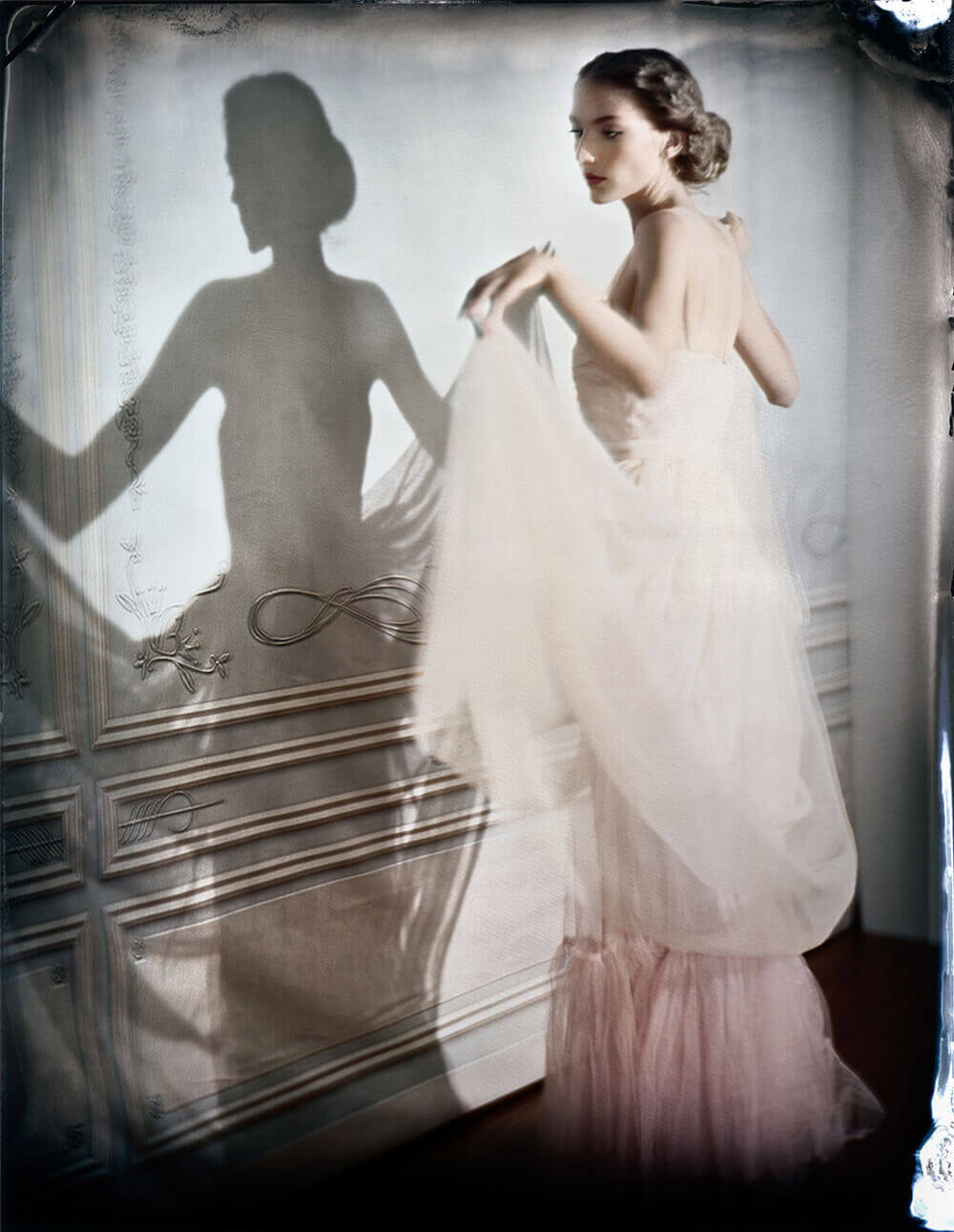
Shadow Dancing, from Shadow Dancing, © Barbara Cole
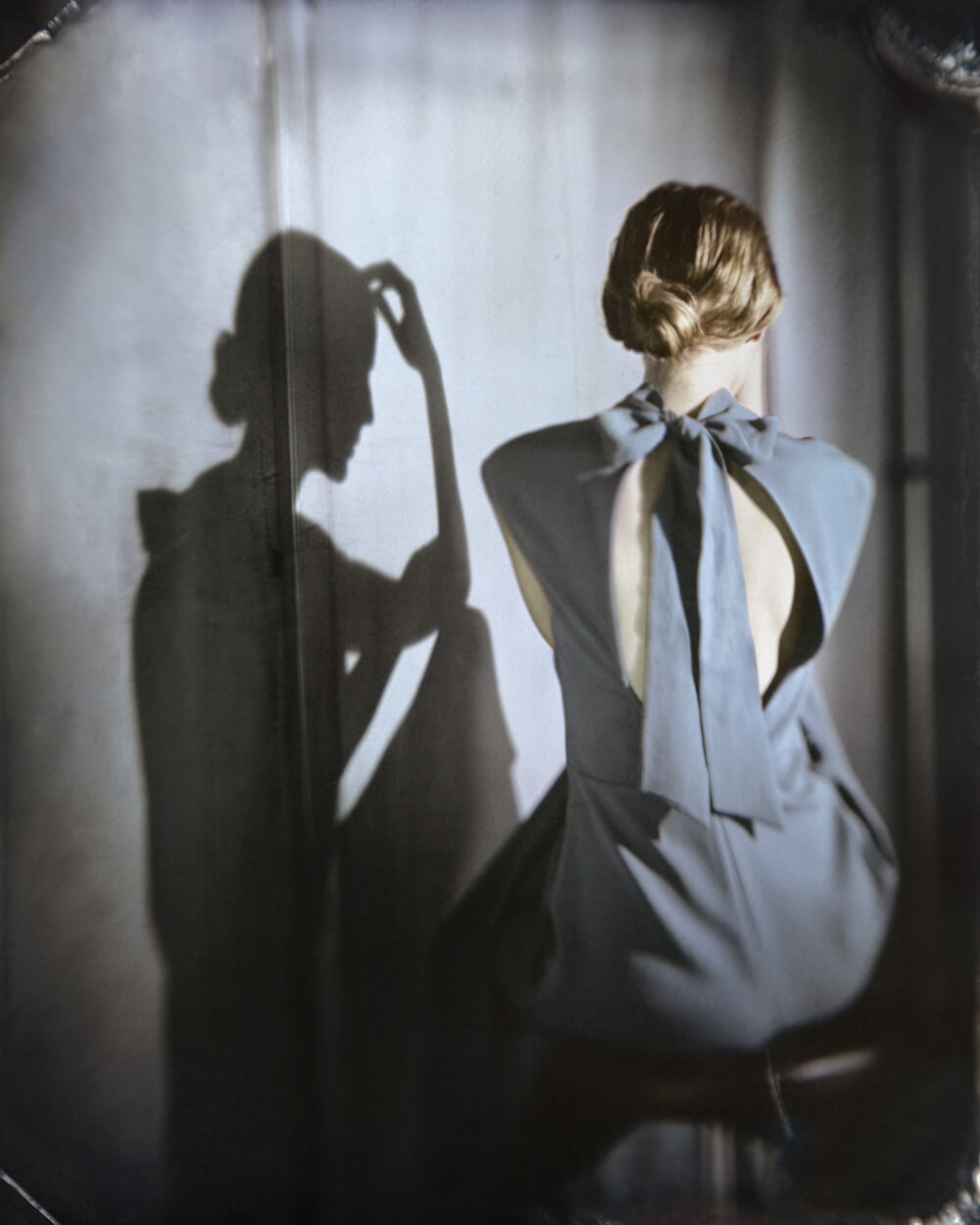
Blue Bow, from Shadow Dancing, © Barbara Cole
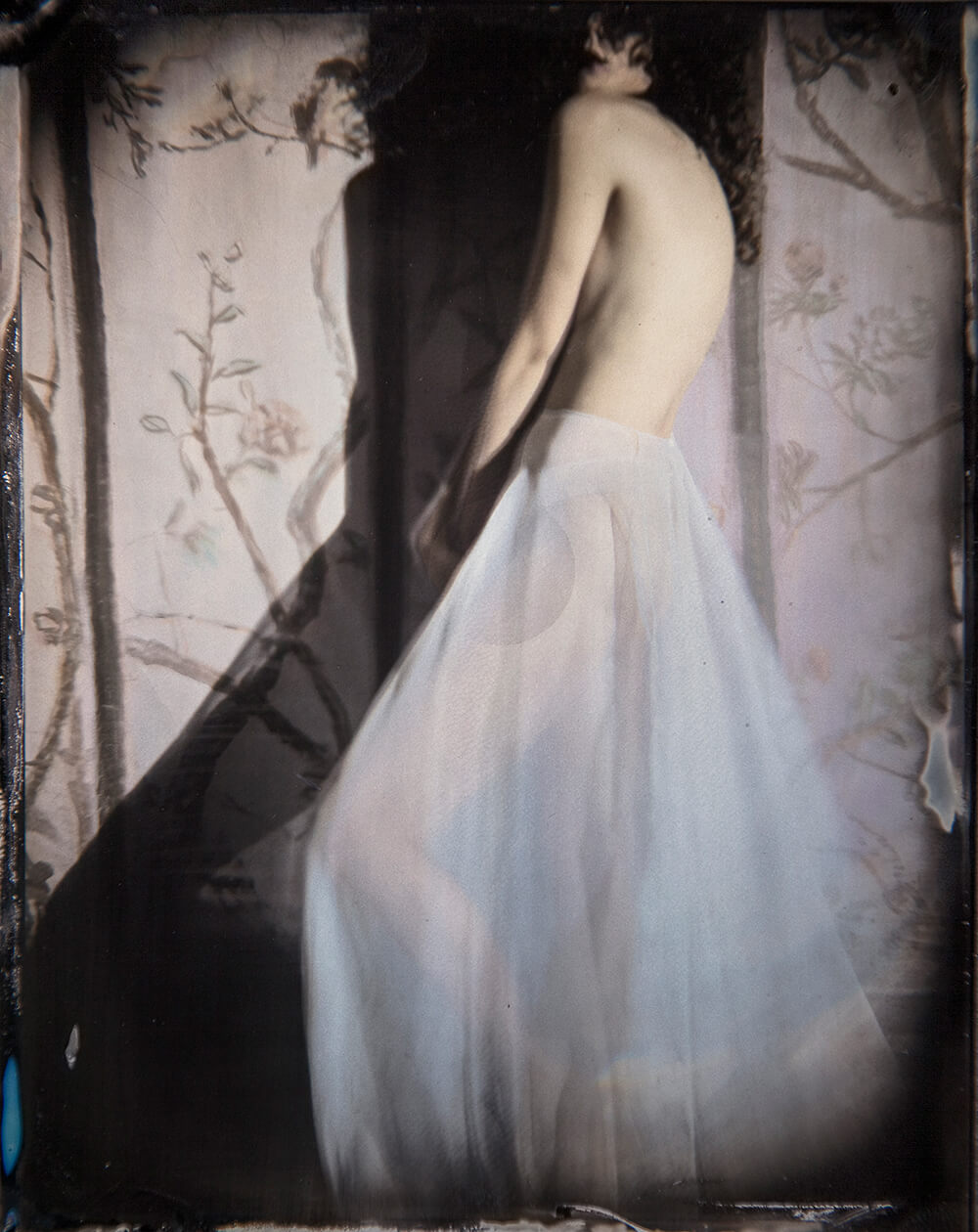
Sasha and the Painted Screen,, from Shadow Dancing, © Barbara Cole
